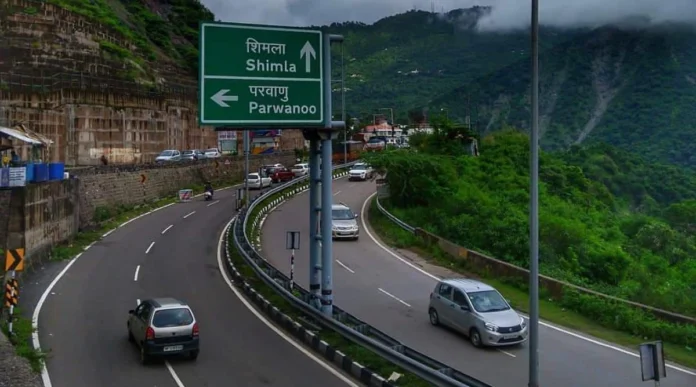The Parliamentary Standing Committee on Transport, Tourism, and Culture has sharply criticised the Ministry of Road Transport and Highways (MoRTH) for failing to address accident-prone black spots on national highways. The committee called it a governance failure that has contributed to preventable deaths. Lawmakers expressed frustration over the slow progress in rectifying hazardous locations, despite repeated recommendations and allocated budgets.
MoRTH data revealed that authorities have identified 13,795 black spots across national highways, but long-term rectification has been completed for only 5,036 locations. The remaining spots continue to pose risks to motorists and pedestrians. The panel highlighted the need for immediate action, stressing that delays in addressing black spots have led to recurring fatal accidents.
A black spot is identified based on the frequency of accidents resulting in fatalities and serious injuries over three consecutive years. These locations often suffer from poor road design, inadequate signage, lack of lighting, and improper traffic management. The committee held MoRTH accountable for failing to implement necessary corrections despite multiple reports and expert recommendations.
To accelerate improvements, the panel proposed a three-tier action plan that includes short-term fixes, medium-term strategies, and long-term structural corrections. Short-term measures involve installing warning signs, reflective markings, and speed restrictions. Medium-term strategies focus on engineering solutions such as redesigning curves, adding dividers, and improving intersections. Long-term corrections require large-scale infrastructure modifications, including road widening, overpasses, and bypasses.
The committee also pointed out inconsistencies in MoRTH’s data collection and reporting on black spots. Officials from various states have reported discrepancies in accident records, with some black spots either misclassified or overlooked. The lack of coordination between central and state agencies has further delayed rectification efforts.
Experts have criticised the government’s reliance on retrospective data to identify black spots rather than proactively using technology for real-time monitoring. Traffic safety analysts suggested deploying artificial intelligence and geospatial mapping to detect high-risk zones before they become black spots.
In response to the panel’s observations, MoRTH assured lawmakers that the ministry is working on a time-bound strategy to eliminate black spots. Officials said that revised guidelines would be issued to ensure faster approval and implementation of safety measures. However, the committee remained unconvinced, stressing that previous commitments had not resulted in significant improvements.
The report also highlighted financial inefficiencies, pointing out that funds allocated for black spot rectification remained underutilised. The committee demanded a detailed audit of projects and called for increased accountability in fund utilisation. Lawmakers suggested that the government impose penalties on contractors and agencies responsible for delays in rectification work.
Road safety activists welcomed the committee’s findings, urging the government to prioritise life-saving interventions. They emphasised that simply identifying black spots is not enough—swift action is necessary to prevent accidents. Campaigners also called for stricter enforcement of traffic laws to reduce reckless driving, which contributes to many accidents at black spots.
The committee underscored that India, which accounts for one of the highest road accident fatality rates globally, cannot afford to ignore the issue. The need for robust enforcement of engineering and safety measures remains critical to reducing the loss of lives on national highways.
With the government under pressure to improve road safety, the parliamentary panel’s recommendations may push MoRTH to expedite reforms. However, unless authorities take decisive action, black spots will continue to endanger road users.
The panel also criticised the delays in black spot rectification, pointing out that road safety remains a low priority despite repeated warnings. Lawmakers noted that while MoRTH has acknowledged the problem, implementation remains slow due to bureaucratic hurdles, lack of coordination with state governments, and inefficiencies in project execution. They urged the ministry to adopt a more proactive approach rather than waiting for accidents to highlight problem areas.
Concerns over contractor accountability were also raised, as several road projects aimed at black spot rectification have either been delayed or completed with substandard quality. The committee recommended stricter penalties for contractors who fail to meet safety standards and suggested that future contracts should include mandatory provisions for periodic safety audits. Ensuring that road maintenance and black spot rectification are treated as ongoing commitments rather than one-time projects was also emphasised.
In addition to road design flaws, the committee highlighted the need for better law enforcement. Reckless driving, overspeeding, and violation of traffic rules contribute to the high accident rate at black spots. Lawmakers urged state governments to increase patrolling in high-risk areas and install automated enforcement systems such as speed cameras and sensor-based monitoring to deter traffic violations.
Stakeholders from the automobile and transport industries also stressed the importance of driver awareness campaigns. Many accidents occur due to a lack of knowledge about high-risk areas, leading to unnecessary fatalities. Experts recommended public information initiatives, including real-time updates on black spots through GPS navigation apps and increased use of warning signals to alert drivers about dangerous stretches of road.
The committee further called for greater involvement of urban planners and civil engineers in the highway design process. Many black spots exist due to outdated road layouts that fail to accommodate growing traffic volumes. Panel members urged the government to integrate modern road safety practices into highway construction and expansion projects to prevent new black spots from emerging.
With road accident fatalities remaining a major concern in India, the committee’s findings have added pressure on the government to act swiftly. If MoRTH fails to take immediate corrective measures, lawmakers warned that India’s road safety crisis could worsen. The report has intensified calls for accountability, pushing authorities to ensure that road users are not subjected to unnecessary risks due to inaction and poor governance.



